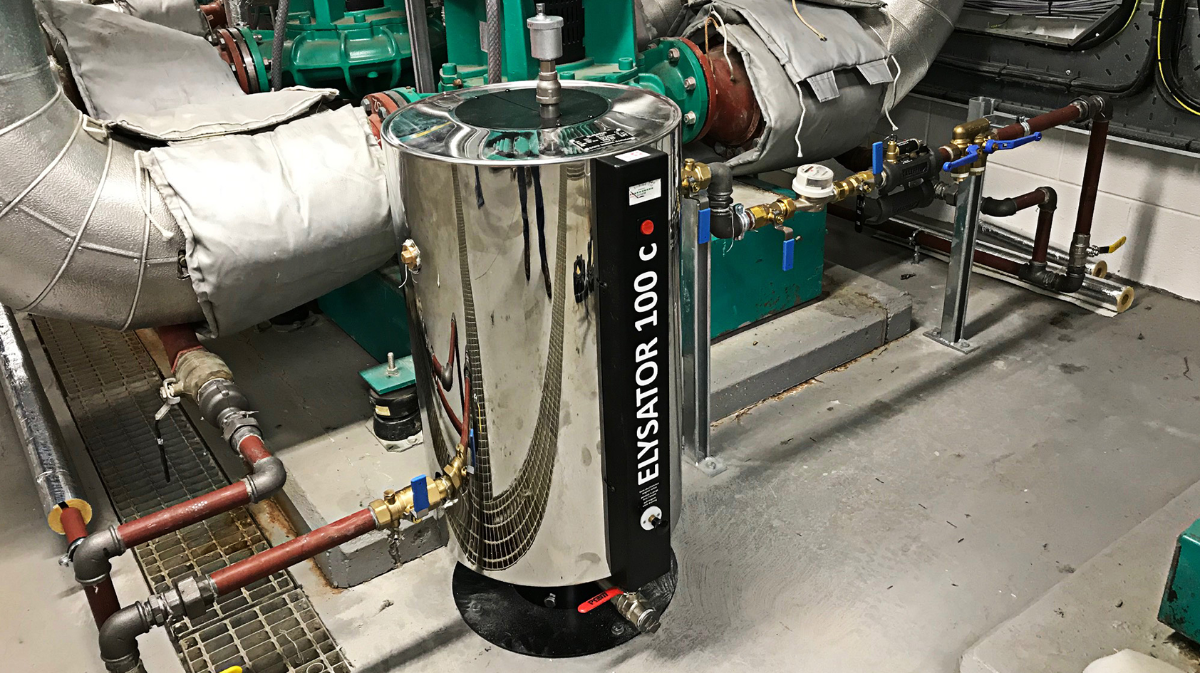CASE STUDY – NI TRUST

The challenge
Routine monitoring found raised counts of soluble iron, conductivity and NRB’s in their closed loop networks which had been exacerbated by a number of significant breaches to the system. Chemical dosing including shock dosing was used to reduce the NRB’s but any successes were only temporary. The estates team were also seeing 4-5 control valve actuators failing on a weekly basis which were costing the trust an estimated £200 per unit to buy and replace. Whilst difficult to pinpoint exactly how the valve damage occurred, the Trust’s own analysis and a commissioned BSRIA report pointed towards the build-up of deposits made up of iron and carbon likely from poor system water.
A proposal for chemical flushing of the system was discussed as a solution and would have required two operatives onsite for 6 months to backflush the system and its components with a cost running into several hundred thousand pounds. COVID also hindered access to many clinical locations and so a treatment was needed that was plant room based and didn’t interface with clinical services. The trust’s mechanical consultant recommended chemical-free principles to the trust and after much consideration and investigation including the environmental benefits the decision was made to proceed with the installation of Elysator and Purotap units across the most problematic networks.
The solution
The installs were on the chilled water process (CWSP), chilled water (CHW) and low temperature (LTHE) networks which all had significantly elevated counts. The IWTM install was commissioned in June 2020 with all monitoring conducted by the trust’s own estates team.
The results following the install saw the CHW process network with the greatest improvement with conductivity down from 3322uS/cm to 56 and chlorides dropping from 35 to 0.5mg/l. Metal counts including dissolved iron, which is a strong indicator of historical corrosion, all trended downwards with the soluble iron count reducing from over 400 to 55mg/l. The LTHW network saw conductivity more than halved from over 4000 to 1803 uS/cm and dissolved iron go from 150 to 0.21. Reduction in the CHW system is trending downwards but remains stubborn with conductivity reducing from over 7000 to 5150uS/cm in the same period.
Protector rig
To accelerate the water quality in the CHW network a mobile Protector rig has been temporarily installed side stream to increase the filtration and treatment of the system water. Originally developed by our marine division the Protector was designed to tackle critical systems with high levels of conductivity.
Along with water quality the appearance of the water and strainer servicing also showed major improvements with the appearance likened to moving from Guinness to a weak lager shandy. With the onsite team trained to deliver the simple PPM’s the only cost for the system are the consumables which are forecast at just £2,000 per annum compared to the existing chemical-based treatment costs of £60,000 P/A. The capital expenditure of the system was recovered at 10 months meaning the system has already paid for itself and delivered improvements not managed with the previous regime. The trust monthly monitoring continues to see values stabilised with decreases in critical indicators of iron and conductivity across all systems.
Advantages
When discussing the advantages of the system beyond the cost saving and reliability the ease of install and being plantroom based and not impacting ward services were seen as big wins for the trust.
A senior Project Manager within the Estates Team stated, “We were under no illusion that this would be an overnight fix but the improvements we have seen have been significant and unmatched by previous efforts, its benefits make it just makes it too hard not to be an advocate for chemical-free”.